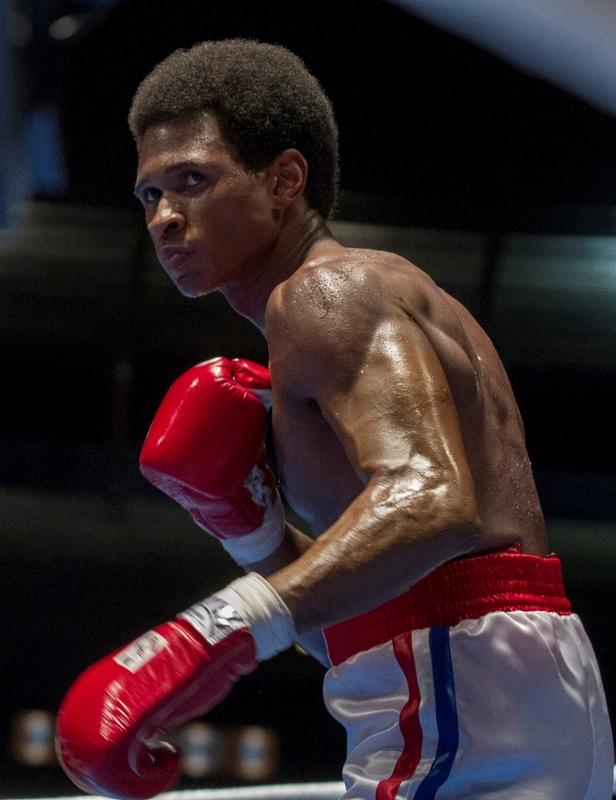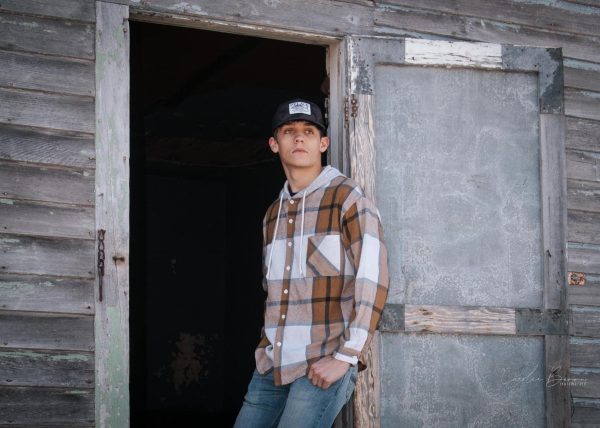Q&A with Usher, on how he became Sugar Ray Leonard in boxing movie ‘Hands of Stone’
ENTER MOVIE-USHER PH
September 1, 2016
Usher as Sugar Ray Leonard? Has Hollywood gone mad? It seems impossible to imagine the R&B singer with his smooth rhymes and silky falsetto portraying a brawler — a world-class one at that.
Usher will surprise and shock many a fan as Leonard in a supporting role in the Roberto Durán biopic “Hands of Stone.” Spanning nearly five decades, the film features Édgar Ramírez as Durán and Robert De Niro as trainer Ray Arcel, who helped bring Durán to international prominence.
The singer-actor spoke in a recent phone interview about the training he underwent to play a boxer.
Q: You’ve always been in good shape, but here you look seriously buff.
A: The physical aspect of it took about a year, which gave me time to acclimate myself to what a boxer goes through. I worked with trainers from New York, Atlanta, Los Angeles and Philly and with Sugar Ray (Leonard) himself.
I really wanted to know what it feels like to be a boxer. It’s more than just gaining or losing weight, which you could do by starving yourself.
Q: So, the training also involved a mental aspect?
A: Yeah, I really wanted to know what it feels like to go toe to toe with someone who is trying to rip your head off.
You have to have the mental strength and intestinal fortitude to push through, even if your body’s weak (and) exhausted. I trained with Philly boxer Xavier Biggs, who is (pro boxer) Tyrell Biggs’ brother. He had me push my body and mind to lengths that were unimaginable before.
I also worked with Avery Sparrow in Philly, and he threw some incredible shots that almost knocked me out. And this was just sparring. You take those pads off and take a punch like that, you can’t let your opponent know you were affected by it. That’s the mental aspect.
Q: And you boxed with Sugar Ray Leonard?
A: It was light sparring and pad work.
What he really helped me with was to understand where he was mentally (when he fought Durán) and what he was going through in his personal life. We sat down and analyzed the character.
Q: I imagine you as more a lover than a fighter. Did you get into fights when you were growing up in Chattanooga, Tenn.?
A: I didn’t really fight as much. That’s why I needed to acclimate myself to the idea of boxing and to what it’s like to use my hands (to hit).
There wasn’t much access to boxing training in Chattanooga. But ultimately, boxing is a poor man’s sport because you only need your fists. And a lot of kids grew up slap-boxing in the streets.
Q: How did you work with Édgar Ramírez?
A: Édgar is just amazing. He speaks eight languages fluently, and he brings a kind of credibility in his acting. I knew I would be acting opposite someone who would really push me.
We spent a lot of time together in the ring. We left open a lot of room for improvisation. Boxing itself is improvisation, it’s being prepared, knowing to react, and pushing yourself.
Q: The film doesn’t portray the U.S. in a flattering light when it comes to policies in Panama and Latin America.
A: This wasn’t intended to be a political film, but there really are moments when you think, “Wow, that really did happen.” That was the reality, and art and music give you the tools to be honest, to be brutally honest about … lived history.
Q: You take the history of boxing seriously, especially when it comes to the role earlier generations of African American fighters played in the struggle for civil rights.
A: We celebrate (Muhammad) Ali, but not necessarily know or understand how many barriers he tore down for us.
We belong to a nomadic culture without our own native languages, and it’s important to celebrate iconic boxers who worked during segregation and who opened up so much. I really hope this film opens up for other (filmmakers) to develop more content about these icons, to see that there’s a story to be told about Sugar Ray Robinson.
———
©2016 The Philadelphia Inquirer
Visit The Philadelphia Inquirer at www.philly.com
Distributed by Tribune Content Agency, LLC.








